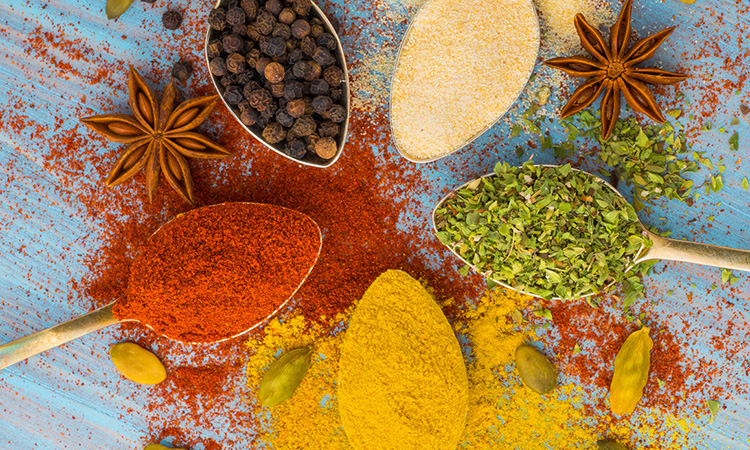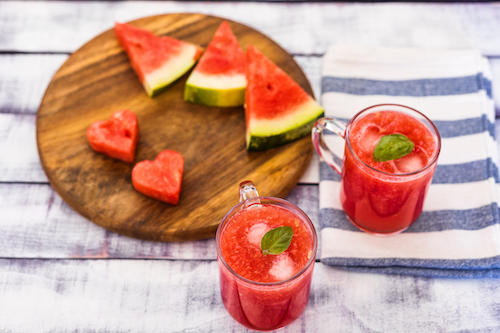By Dr. Susan E. Brown, PhD
I really can’t say enough good things about spices. Not only can the right spice nearly instantly transform a basic dish into something much more flavorful, but they can be added to almost everything — from rubs on meat to cooked vegetables to salad dressings. Plus, many of my preferred spices for taste are also good for your bones.

Here’s a look at what’s in my bone-supporting spice rack:
Cinnamon. Studies of this warm, fragrant spice show that it reduces bone breakdown and may help prevent osteoporotic bone loss. Sprinkle it on apples or frozen bananas, add it to tea or coffee, put some in your yogurt — it works well in savory dishes as well as sweet, so don’t hesitate to try it on meat or in soups.
Cloves. Tiny clove buds pack a powerful nutrient punch — they contain Vitamin K, manganese and omega-3 fatty acids, all of which are essential bone nutrients. Ground cloves are great in baked goods and stir fry, or you can put whole cloves in hot apple cider on a cold winter day.
Garlic. There’s almost nothing this spice can’t do — it has antioxidant, anti-inflammatory and antibacterial properties. And it’s packed with key bone nutrients — from vitamins A, B6, C and K to phosphorus, potassium, magnesium, zinc, calcium and iron. Studies of garlic (both raw and in supplements) have found it to lower blood pressure and cholesterol and even help prevent toxicity from lead poisoning. It’s a staple in many soups, dips or sauces — or you can roast it and eat it as-is. Many people even enjoy it raw!
Ginger. This spice, widely used in Asian cooking, has anti-inflammatory and antioxidant actions too, as well as significant amounts of potassium, magnesium, selenium and phosphorus — all good for bone health. Make it into a tea, or slice it thinly and cook it in stir fry or with fish.
Turmeric. A favorite of Indian and South Asian cuisine, this spice helps protect the body from oxidative stress that leads to cell damage, bone loss and disease. It has a number of compounds that offer immune system benefits — the best known is curcumin, but there are others too. Use it in curries, toss with rice or add it to cooked vegetables.
What are some of your favorite ways to spice up your foods?
Pumpkin soup recipe
Ingredients
• 1 cooking pumpkin or large butternut squash, peeled, seeded and cut into chunks
• 16–32 oz chicken, turkey or vegetable broth
• 1–2 Tbsp fresh ginger (to taste) minced (or 1 Tbsp ground dried ginger)
• 1 medium to large yellow onion, diced
• 1-2 Tbsp olive oil
• 2-4 cloves garlic
• 1/2 tsp turmeric
• 1/2 tsp cumin
• chopped scallion for garnish
• salt and pepper to taste
Directions
Boil pumpkin chunks in water or 16 oz of broth until soft (use water if you prefer a milder, more pumpkin-y and less broth-y flavor).
Mash the pumpkin and add 8 oz of broth (reserve the remaining 8 oz). Place over low heat and add the ginger, stirring occasionally.
In a separate skillet, sauté the onions and garlic in olive oil. When onions are soft, add turmeric, salt, and pepper. Sauté for 1 minute and add to pumpkin and ginger mix.
Slowly add the remaining broth, stirring constantly, until the soup is your preferred consistency (if you add all the broth and it’s still thicker than you like, add water).
Add salt and pepper to taste. Garnish with scallion if desired.
Easy options for more flavors
• For a spicier soup, include 1/2 tsp red pepper flakes.
• For a sweeter soup, add 1 cup grated carrot to the pumpkin when boiling it initially, and/or add diced red or orange bell pepper in the sauté until soft before including in the soup. Sprinkle with cinnamon and a dash of cloves before serving.
• Add a bit of Caribbean to it by substituting coconut milk and a tablespoon of fresh lime juice in place of some of the broth, and use cilantro in place of scallion for garnish










